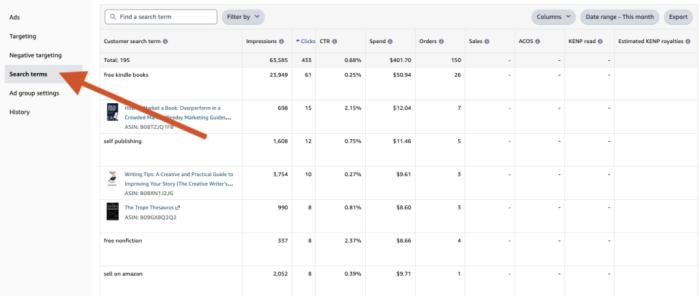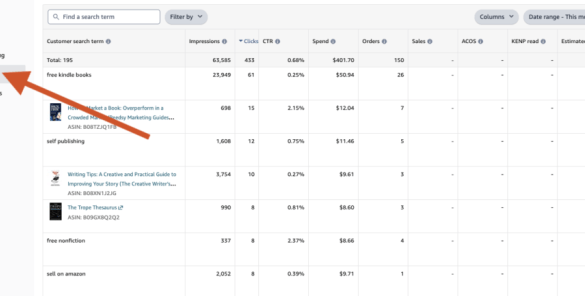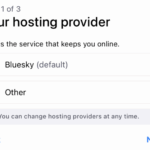Top 5 signs your Amazon ads are dead in the water. Are your Amazon ad campaigns sputtering? This post dives deep into the telltale signs that your ads are losing steam, from plummeting click-through rates to a lackluster return on investment. We’ll explore five critical indicators that could be signaling trouble, providing actionable insights and strategies to revitalize your campaigns and get those sales flowing again.
This comprehensive guide will explore five key areas that often signal declining performance in Amazon Ads campaigns. We’ll examine everything from low click-through rates and conversion issues to negative feedback, high costs, and inadequate sales volume. By understanding these warning signs, you can pinpoint the exact problems and implement targeted solutions.
Low Click-Through Rates (CTR)
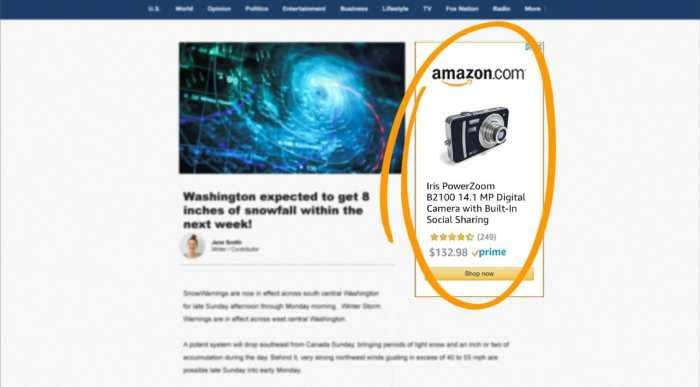
Low click-through rates (CTRs) in Amazon Ads are a common sign that your campaigns might not be performing optimally. Understanding why your CTRs are low is crucial for identifying areas needing improvement and ultimately driving more conversions. Poor CTRs often stem from a disconnect between your ad copy, targeting strategies, and the overall user experience. This analysis delves into various scenarios, highlighting the factors contributing to low CTRs and providing actionable steps to rectify them.Identifying the root cause of low CTRs requires a multifaceted approach.
Examining specific ad groups or campaigns, analyzing ad formats, and refining the landing page experience are all critical steps. By pinpointing weaknesses, you can tailor your campaigns to resonate better with your target audience, leading to higher click-throughs and ultimately, increased sales.
Scenarios Demonstrating Low CTRs
Several factors can contribute to low click-through rates. Here are five distinct scenarios illustrating different causes and solutions.
- Scenario 1: Generic Ad Copy for a Niche Product. A seller promoting a specialized gardening tool with a broad, generic ad copy targeting “gardening tools” is likely to receive low CTRs. The ad fails to highlight the unique features and benefits of the tool, making it less appealing to potential buyers. A more targeted approach, emphasizing the specific tool’s advantages, would improve the ad’s effectiveness.
For example, the ad copy could focus on the tool’s ergonomic design, durability, or ease of use.
- Scenario 2: Inaccurate Targeting for a Specific Product. A seller promoting a high-end, designer handbag using broad targeting s like “handbags” or “women’s accessories.” This broad targeting strategy exposes the ad to a large audience that is not likely interested in the product, resulting in low click-through rates. Refining targeting to include specific designer brands, price points, or customer demographics relevant to the product would yield higher engagement.
- Scenario 3: Poorly Optimized Product Listing. A seller promoting a beauty product with an image that does not accurately reflect the product or a description that fails to highlight key features. A mismatch between the ad copy and the product listing often results in low click-through rates. Visual elements and detailed product descriptions are crucial to attract customers and accurately represent the product.
- Scenario 4: Ineffective Video Ad Format. A seller uses a video ad that is too long, confusing, or fails to clearly showcase the product’s benefits. A poorly designed video ad may lose the attention of potential customers, causing a significant drop in CTR. Optimizing video length, visual appeal, and clear product demonstrations will improve the video’s effectiveness.
- Scenario 5: Irrelevant s for a Specific Product Category. A seller promoting a particular type of kitchen appliance with s that are not directly related to the product, or s that have extremely low search volume. This strategy often leads to low click-through rates as the target audience is not interested in the product. Utilizing relevant and high-volume s will improve the chances of attracting the right customers.
So, your Amazon ads are sputtering? Feeling like they’re just… not working? It might be time to consider a shift in strategy. Maybe it’s time to explore other avenues, like an introduction to partnership marketing, an introduction to partnership marketing.
This could be a game-changer. Ultimately, if you’re not seeing the return you expect, digging deeper into the top 5 signs your Amazon ads are dead in the water is a good first step to finding a solution.
Measuring Low CTRs
Tracking CTRs for specific ad groups or campaigns is essential for identifying underperforming areas. Amazon Ads dashboards provide comprehensive data on ad performance, allowing you to isolate and analyze CTRs for different ad groups or campaigns. This data allows for detailed analysis, providing insights into the effectiveness of different targeting strategies and ad formats.
Comparing Ad Formats
Comparing the performance of different ad formats, such as images, videos, and text ads, can highlight potential issues. Analyze which formats are generating the highest and lowest click-through rates. A consistent trend in low CTRs for one format suggests a need for improvement in the visual appeal or messaging within that format.
Improving Ad Copy and Landing Page Experience
Improving ad copy and landing page experience is crucial for boosting CTRs. Strong ad copy should clearly highlight the product’s benefits, while a user-friendly landing page should provide a seamless and compelling shopping experience.
Example CTR Comparison Table
| Campaign | Ad Format | CTR (%) | Reason for Low CTR (if applicable) |
|---|---|---|---|
| Campaign A (Gardening Tools) | Image | 1.5 | Generic copy, unclear product benefits |
| Campaign B (Designer Handbags) | Text | 2.8 | Broad targeting, mismatched product category |
| Campaign C (Beauty Product) | Image | 0.8 | Poor product image quality, vague description |
| Campaign D (Kitchen Appliance) | Video | 1.2 | Confusing video, unclear product value proposition |
| Campaign E (Specialized Tool) | Image | 3.5 | – |
Poor Conversion Rates
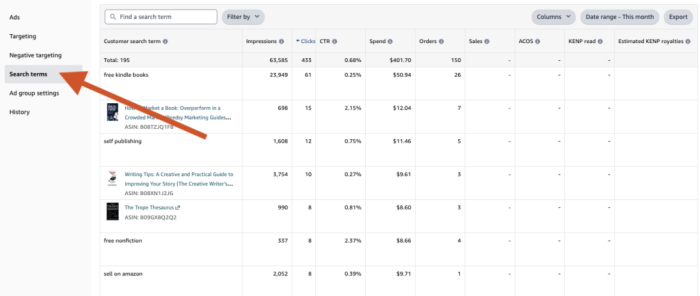
Amazon ads can be a powerful tool for driving sales, but a low conversion rate signals a problem that needs attention. Conversion rates, representing the percentage of visitors who complete a desired action (like purchasing), are crucial for measuring the effectiveness of your ad campaigns. When this rate dips below expectations, it’s a clear indication that something is hindering the customer journey from initial ad interaction to final purchase.
A deeper dive into the reasons behind low conversion rates is essential to rectify the situation.A significant drop in conversion rates, following a potentially low click-through rate, indicates that the problem isn’t just with attracting initial clicks but with compelling users to complete the purchase. This might be due to a multitude of factors, from inadequate product descriptions on the listing page to a subpar customer experience.
Identifying these factors is critical to improving performance and optimizing ad spend.
Factors Affecting Low Conversion Rates
Understanding the reasons behind low conversion rates is vital for implementing effective strategies to boost sales. Several factors can contribute to this issue, affecting different product categories and customer segments differently.
- Inconsistent Product Descriptions: Poorly written or incomplete product descriptions can significantly impact conversion rates. For instance, a clothing retailer might fail to highlight crucial details like sizing charts, material composition, or care instructions, leaving customers uncertain about the product’s suitability. This is particularly critical for products with varying sizes or materials. This is a common issue across numerous product categories, including electronics, home goods, and fashion.
Customers need clear, concise, and detailed information to make informed decisions, influencing their decision-making process.
- High Prices Compared to Competitors: If a product’s price is significantly higher than similar offerings on Amazon, customers are more likely to abandon the purchase. This is especially true for competitive product categories like electronics, where price sensitivity is high. Customer segments focused on value and budget often prioritize lower costs, so pricing strategies should align with these expectations. For example, a consumer electronics company advertising a phone that’s priced much higher than comparable models from competitors will face a lower conversion rate.
So, your Amazon ads are sputtering? Maybe they’re just plain dead in the water. Five telltale signs include a lack of clicks, conversions, or even impressions. Understanding why Google Analytics and Google Search Console might show different SEO data is key to figuring out what’s going on. For example, check out why Google Analytics and Google Search Console show different SEO data to learn more about the potential discrepancies.
Ultimately, addressing these discrepancies can be crucial for optimizing your Amazon ad strategy for better results.
- Lack of Trust and Reviews: Customers often rely on reviews and ratings to gauge the quality and reliability of a product. A lack of positive reviews, or a high percentage of negative ones, can deter potential buyers, impacting conversion rates, especially for products where trust is paramount, such as high-ticket items. A beauty product, for instance, with few reviews or overwhelmingly negative ones, is likely to experience low conversions.
- Poor User Experience on Product Pages: A cumbersome product page with slow loading times, confusing navigation, or an unattractive design can discourage purchases. Customers expect a smooth and visually appealing experience. This is particularly important for larger retailers or businesses with numerous product lines. For example, a cluttered or poorly designed product page for a kitchen appliance might cause a drop in conversion rate.
- Inadequate or Misleading Visuals: Product images and videos play a vital role in showcasing the product’s features and benefits. If the visuals are low-quality, misleading, or fail to effectively communicate the product’s value, conversion rates will suffer. This issue can affect any product category. An example is a clothing retailer displaying a product image that doesn’t accurately reflect the product’s actual color or design.
This will deter potential buyers, resulting in low conversion rates.
Correlation Between CTR and Conversion Rates
A low click-through rate (CTR) often correlates with a low conversion rate. If your ads aren’t attracting clicks, then it’s highly unlikely that those clicks will lead to conversions. A low CTR suggests a mismatch between your ad copy and the target audience’s interests, while a low conversion rate points to issues within the customer journey after the click.
Analyzing the customer journey from ad click to purchase is essential for identifying and rectifying these issues.
Conversion Rate Comparison Across Ad Groups
Comparing conversion rates across different ad groups targeting various customer segments is crucial for identifying successful strategies. For instance, ad groups targeting specific demographics or interests might yield higher conversion rates. A business selling a specific type of sports equipment might see a higher conversion rate in ad groups targeted at athletes, compared to ad groups targeting a broader audience.
This data allows for strategic adjustments, enabling optimization of campaigns targeting specific customer segments.
Amazon Product Listing Page Issues
Several issues within the Amazon product listing pages directly impact conversion rates. Poor product descriptions, low-quality images, a lack of customer reviews, and an unintuitive layout can all deter potential customers. Optimizing these aspects can significantly boost conversion rates.
Utilizing A/B Testing for Optimization
A/B testing is a valuable tool for optimizing product pages and improving conversion rates. By testing different versions of product pages, you can identify which elements resonate most with your target audience. This iterative process, where different variations are tested, helps identify optimal elements for design, product descriptions, and pricing strategies, enabling continuous improvement and optimization of conversion rates.
Figuring out if your Amazon ads are sputtering? Check for these top 5 signs they’re losing steam. But, if you’re looking to spice up your B2B marketing game, consider infographics. They’re a great way to grab attention, and learning how to use them effectively can be a real game-changer. For example, check out top 3 ways to use infographics for b2b marketing for some serious inspiration on crafting visually appealing and informative infographics that boost engagement.
Ultimately, if your Amazon ads are struggling, it’s worth looking at these strategies for a fresh perspective, and to ensure you’re targeting the right audience.
Negative Feedback and Reviews
Negative feedback on Amazon, whether from customer reviews or ratings, can significantly impact your product listings and advertising campaigns. It’s a critical area to monitor because it often reflects issues that are hurting your sales and brand reputation. Understanding how negative reviews affect ad performance is crucial for proactive campaign management.Negative reviews, especially those regarding the product itself, the shipping process, or customer service interactions, can directly affect your Amazon ad performance.
These reviews can deter potential customers, lowering click-through rates, and decreasing conversion rates. Consequently, your ad spend becomes less effective, as the advertising budget is not generating the expected return on investment. Understanding the connection between negative feedback and campaign performance is key to improving your Amazon presence.
Examples of Negative Feedback
Negative reviews aren’t always easy to identify as directly impacting ad performance. However, certain themes and types of complaints frequently point to issues in your ad strategy or product. Here are five examples:
- Inaccurate Product Descriptions: Reviews mentioning discrepancies between the advertised product and the actual item received often stem from mismatched marketing materials. If your Amazon ad promises a specific feature or function, and the product doesn’t deliver, customers will express this dissatisfaction. This can signal issues in your product listing and potentially reflect inaccuracies in your ad copy.
- Shipping Delays or Issues: Complaints about slow shipping, damaged packages, or incorrect items delivered directly affect the customer experience. These negative reviews, often linked to the delivery process, might not directly relate to your ad campaign, but they reflect the brand’s overall reliability and fulfillment. The connection to the ad campaign is that potential customers might associate a poor shipping experience with a general lack of care, leading to lower trust and conversion.
- Product Defects or Poor Quality: Reviews highlighting product defects, poor quality materials, or malfunctioning features are direct indicators of issues with the product itself. While the ad may have accurately depicted the product, the underlying quality issues can create a negative perception and reduce trust in the product. This can lead to lower ad engagement, especially if the negative reviews consistently highlight the same defects.
- Customer Service Failures: Negative feedback regarding lack of response, unhelpful support, or slow resolution of issues impacts customer satisfaction. This often translates into a decreased trust in the brand, which can lead to less positive sentiment and lower click-through rates for your Amazon ads. If customer service is a weak point, your ad campaign will have to work harder to attract customers.
- Unrealistic Expectations/Pricing: Reviews criticizing the price or highlighting unfulfilled expectations (e.g., a product not living up to advertised promises) often indicate a mismatch between the ad and the actual value proposition. This can cause a disconnect between the marketing message and the product’s reality, leading to decreased conversion rates for your ad campaigns. The ad may not be targeting the right audience if the price doesn’t align with customer expectations.
Impact on Ad Performance and Brand Perception
Negative reviews directly affect ad performance by reducing click-through rates and conversion rates. They also negatively impact brand perception. Potential customers see these reviews and form an impression of your brand’s reliability and quality, which directly impacts their decision to click on your ad or purchase your product.
Correlation Between Negative Feedback and Campaign Performance
The correlation between the number of negative reviews and ad performance is often significant. A high volume of negative reviews indicates potential issues that need immediate attention. A decrease in click-through rates and conversion rates typically accompanies an increase in negative reviews. This relationship underscores the importance of monitoring reviews and addressing negative feedback promptly.
| Number of Negative Reviews | Impact on Ad Performance |
|---|---|
| Low (e.g., 1-5) | Potential for minor issues, monitoring recommended |
| Moderate (e.g., 6-20) | Significant impact, requires investigation and corrective actions |
| High (e.g., 21+) | Critical impact, potential for significant campaign performance degradation |
High Cost Per Click (CPC) with Low ROI
Amazon Ads can be a powerful tool, but a high cost-per-click (CPC) with a low return on investment (ROI) is a major pitfall. Understanding the factors driving these issues is crucial for optimizing your campaigns and maximizing profitability. This often stems from poorly targeted s, ineffective ad copy, and improper bidding strategies. Addressing these issues can dramatically improve your campaign performance.High CPCs coupled with low ROI frequently indicate a mismatch between your ad spend and the value you’re receiving.
This can be due to several factors, including poor targeting, ineffective ad copy, and inappropriate bidding strategies. It’s essential to identify the root causes of these issues to implement effective corrective measures. Understanding the breakdown of campaign spending, conversions, and ROI is crucial for making data-driven decisions and avoiding costly mistakes.
Identifying Root Causes of High CPCs and Low ROI
High CPCs with low ROI often result from a mismatch between your ad spend and the return you receive. This is often a symptom of inefficient campaign structure and poor selection. Analyzing your campaign data provides insights into areas needing improvement. Poor targeting, ineffective ad copy, and incorrect bidding strategies are often the root causes. Furthermore, poorly chosen s, which might attract irrelevant traffic, can significantly impact ROI.
Case Studies: High CPCs with Low ROI
- A seller targeting highly competitive s for a niche product saw their CPC skyrocket. Despite high click-through rates, conversions were minimal, resulting in a poor ROI. The issue was that their s weren’t specific enough and attracted too much irrelevant traffic.
- Another seller optimized their ad copy for broad s but didn’t account for customer intent. While the clicks were high, the conversion rate was exceptionally low, leading to a disappointing ROI. They needed to refine their ad copy to align better with the specific needs of their target audience.
- A business using a fixed bidding strategy for all products saw high CPCs across the board, despite inconsistent ROI. The issue was that different products had varying levels of profitability and conversion potential, which required different bidding strategies. Adjusting bids based on product profitability and conversion potential would have improved ROI significantly.
- A retailer running campaigns with overly broad targeting witnessed a substantial increase in CPC, leading to a poor ROI. The lack of specificity in targeting resulted in clicks from customers who weren’t likely to convert. They needed to refine their targeting criteria to focus on a more qualified audience.
- A seller targeting generic s in a highly competitive marketplace experienced a dramatic increase in CPC. Although there were clicks, the conversions were low. This was due to the lack of specificity in their targeting, resulting in a substantial decrease in ROI. They needed to identify more specific, high-value s.
Comparing Bidding Strategies
Different bidding strategies significantly impact CPC and ROI. A fixed bid strategy, where you set a fixed price per click, might be suitable for some campaigns, but it can lead to high CPCs if your target s are highly competitive. Manual bidding allows you to adjust bids based on real-time data and performance, enabling you to optimize CPC and ROI.
Automated bidding strategies, such as target CPA, automatically adjust bids to achieve a desired cost per acquisition. Each method has its strengths and weaknesses.
Optimizing Bids and Budgets
Optimizing bids and budgets is essential for reducing costs without compromising conversions. Analyzing your campaign data is critical to identify which s and ad groups are performing well and which are not. Adjust bids for underperforming s to reduce unnecessary costs. Lowering bids for s with low conversion rates and increasing bids for high-converting s can improve ROI.
Monitoring budget allocation is equally important. Allocate more budget to high-performing campaigns and reduce spending on underperforming ones.
Campaign Spending, Conversions, and ROI Breakdown
Analyzing campaign spending, conversions, and ROI is essential for measuring campaign performance. A detailed breakdown allows you to identify areas needing improvement and optimize your campaigns. Tracking key metrics such as CPC, CTR, conversion rate, and ROI helps to assess the effectiveness of your ad strategies. For instance, a campaign with a high CPC but a low conversion rate indicates a need for adjustments to targeting or ad copy.
Lack of Sales or Insufficient Sales Volume
Amazon Ads can seem promising at first, with enticing visuals and potential for high returns. However, a crucial aspect often overlooked is the relationship between ad spend, sales volume, and conversion rates. A seemingly successful ad campaign can fall flat if sales volume remains stubbornly low, despite a seemingly good ad campaign. This often indicates a deeper problem that requires careful analysis.Understanding the reasons behind insufficient sales volume is essential for optimizing your Amazon ad strategy.
A lack of sales or low sales volume, despite adequate ad spend, often points to issues with targeting, product listing quality, or even external factors beyond your control. This section will delve into these issues, providing actionable insights to diagnose and resolve these problems.
Scenarios of Insufficient Sales Volume
Insufficient sales volume despite a seemingly good ad campaign can manifest in several distinct scenarios. A campaign might be well-targeted but lack compelling product listings, hindering conversions. Alternatively, a high ad spend might not translate to increased sales if the target audience isn’t receptive to the product.
- Poor Product Listing Optimization: Even with excellent ad targeting, a poorly optimized product listing can deter potential buyers. This could include weak product descriptions, inadequate images, or missing key selling points. The product listing acts as a storefront, and a poorly designed one can lead to low engagement and, consequently, low sales.
- Incorrect Targeting: Focusing your ads on the wrong audience demographic or interest groups can result in high ad spend with minimal return. Spending heavily on a campaign targeting people not interested in your product will yield low conversion rates and low sales volume.
- Competition Issues: A highly competitive market can make it difficult to stand out. High-quality competitors might be dominating the search results, making it challenging to attract customers despite your ad campaign.
- External Market Factors: Economic downturns, seasonal variations, or unexpected market shifts can affect sales volume, even with a well-performing ad campaign. If the broader market is not receptive, sales volume will likely be affected, regardless of your ad spend.
- Pricing Issues: A price point that’s too high or too low compared to the market can impact sales. A product’s price relative to its perceived value can hinder sales despite a well-executed ad campaign.
Analyzing Sales Data for Problem Areas
Sales data is crucial for understanding the root cause of insufficient sales volume. Gathering data from various sources, including Amazon Seller Central, Google Analytics, and your CRM, is essential. Analyze the sales funnel to pinpoint bottlenecks. Understanding the flow of customers from ad impressions to purchases is critical.
- Review Conversion Rates at Each Stage: Tracking conversion rates from clicks to add-to-cart, to purchase is essential. Analyzing each stage of the conversion process identifies areas where customers drop off.
- Compare Sales Trends Over Time: Identify seasonal patterns, promotions, or other events impacting sales volume. Tracking sales data over time can reveal insights into consistent sales patterns and potential seasonal fluctuations.
- Identify Top Performing s and Products: Examine which s and product listings are driving sales and which ones are underperforming. This helps you allocate your ad spend more strategically.
Relationship Between Ad Spend, Sales Volume, and Conversion Rates
The relationship between ad spend, sales volume, and conversion rates is a complex one. A high ad spend doesn’t automatically translate to high sales volume. A high conversion rate is a crucial component for achieving a positive return on ad spend (ROAS).
ROAS = (Revenue Generated / Advertising Cost) – 100%
A high ad spend with low conversion rates will likely result in low sales volume and negative ROI.
Example Sales Data Comparison
The table below compares the sales volume of different ad campaigns targeting various products.
| Campaign | Product | Ad Spend (USD) | Sales Volume | Conversion Rate (%) |
|---|---|---|---|---|
| Campaign A | Product X | 1000 | 50 | 0.5 |
| Campaign B | Product Y | 1500 | 75 | 0.5 |
| Campaign C | Product Z | 2000 | 100 | 0.5 |
Note: The example above assumes a constant conversion rate for simplicity. In reality, conversion rates will vary significantly depending on various factors.
Possible Reasons for Insufficient Sales Volume
A lack of sales or insufficient sales volume can stem from various issues, ranging from product-specific problems to broader market trends.
- Pricing Strategy: The price point might not align with the perceived value of the product. High prices relative to perceived value or competing products can result in insufficient sales.
- Product Quality Concerns: Issues with product quality or customer service can negatively impact sales volume. Negative feedback or reviews can significantly impact sales.
- Competitor Analysis: Analysis of competitor pricing and product features is crucial. Competitors might offer similar products at lower prices or with enhanced features.
- Marketing Strategies: Insufficient or ineffective marketing strategies can fail to reach the target audience. Marketing strategies might not resonate with the target market.
- Inventory Issues: Lack of inventory can severely impact sales, as customers are unable to purchase the product.
Poor Audience Targeting: Top 5 Signs Your Amazon Ads Are Dead In The Water
Amazon Ads thrive on precise targeting. When your audience isn’t a good fit for your product, your ads become ineffective. This often manifests in low engagement, high costs, and ultimately, disappointing sales. Understanding how to correctly target your ideal customer is critical to achieving profitability and return on investment.
Examples of Mismatched Audience Targeting
Poor targeting in Amazon Ads often stems from a misunderstanding of the ideal customer profile. Here are five distinct examples:
- Targeting too broadly: Casting a wide net to reach everyone, regardless of their actual interest in the product. This dilutes ad spend and results in low engagement from people who aren’t your ideal customers.
- Targeting irrelevant s: Using s that don’t accurately reflect the product’s benefits or the customer’s search intent. This leads to clicks from people who aren’t likely to convert, wasting your advertising budget.
- Ignoring demographics: Focusing on broad demographics without considering specific customer needs. For example, targeting all women aged 25-55 for a product designed for environmentally conscious mothers may not yield the desired results.
- Neglecting customer behavior: Failing to consider the specific purchasing behaviors of your target audience. If your target audience frequently searches for “organic dog food” but your ad targets “dog food,” your campaign might not reach the right people.
- Overlooking competitor analysis: Not examining what competitors are doing in terms of targeting. Failing to learn from successful competitors can lead to missed opportunities to identify your own best customers and better-performing s.
Impact of Inappropriate Targeting on Ad Performance
Inappropriate targeting directly impacts ad performance in several ways. Low click-through rates (CTRs) and conversion rates are frequent symptoms of mismatched audiences. High cost-per-click (CPC) with a poor return on investment (ROI) is another clear indicator. Essentially, you’re paying for impressions that don’t lead to sales. This ultimately leads to a decrease in sales volume.
Identifying and Adjusting Targeting Parameters
Identifying areas needing adjustment requires a thorough analysis of your campaign data. Regularly review your campaign reports, paying close attention to metrics like CTR, conversion rates, and CPC. Identify s and audiences that aren’t performing well. Adjust your targeting parameters by using more specific s, refining demographics, and focusing on customer behaviors. Utilizing A/B testing for different targeting strategies is a powerful tool to see what resonates best with your ideal customer.
Comparing Targeting Strategies
Different targeting strategies impact campaign performance. Broad targeting reaches a wider audience but often results in lower conversion rates and higher costs. Narrow targeting focuses on a specific audience, increasing relevance and conversions, but potentially reducing reach. Dynamic targeting utilizes machine learning to adapt your targeting over time, based on performance data.
Audience Characteristics for High-Performing and Underperforming Campaigns
| Campaign Type | Customer Age Range | Customer Interests | Customer Behaviors | s |
|---|---|---|---|---|
| High-Performing | 35-55 | Eco-conscious parenting, healthy pet food | Frequently search for “organic dog food,” “natural dog treats” | organic dog food, natural dog treats, premium dog food |
| Underperforming | 18-35 | Fashion, travel | Search for “cheap dog food,” “dog food coupons” | cheap dog food, dog food coupons, dog food deals |
Inadequate Budget Allocation
Amazon Ads success hinges on more than just creative campaigns; it’s crucial to allocate your budget strategically. Poor budget allocation can lead to missed opportunities, wasted spend, and ultimately, underperforming campaigns. Understanding how to optimize your budget is essential for achieving a positive return on investment (ROI). This section delves into the critical issue of inadequate budget allocation in Amazon Ads and provides actionable strategies for improvement.
Ineffective Budget Allocation Scenarios
Misallocation of funds within Amazon Ads can manifest in various ways. Here are five common scenarios:
- Insufficient overall budget: A common pitfall is allocating an insufficient budget to cover the required ad spend across all relevant campaigns and ad groups. This leads to under-saturation of the target audience and limits the potential reach and impact of the campaigns.
- Imbalance between campaigns: Allocating disproportionate budgets to specific campaigns can result in underperformance of others. For instance, one campaign might receive a high budget for a short-term promotion, while other, potentially more profitable, campaigns receive a significantly lower budget, thus potentially missing out on conversions and growth.
- Over-allocation to underperforming ad groups: A common mistake is pouring resources into ad groups that are not performing as expected. This means funds are wasted on campaigns and ad groups that aren’t attracting the desired conversions, potentially harming overall campaign performance.
- Ignoring seasonality: Fluctuations in demand and consumer behavior can significantly affect ad campaign performance. Failing to adjust the budget allocation based on seasonality and market trends can result in inefficient resource utilization. For example, a retailer might allocate a large portion of their budget to holiday campaigns, but forget to adjust their budget to accommodate the potentially lower demand during the off-season.
- Lack of ongoing budget optimization: Not regularly reviewing and adjusting the budget allocation based on performance data can lead to wasted spending. A retailer might stick to a static budget without monitoring the actual conversion rates of each ad group. This approach often results in a significant drop in the effectiveness of the ads and can severely impact ROI.
Identifying Ineffective Budget Utilization
To pinpoint areas where budgets aren’t being utilized effectively, a thorough analysis of campaign performance is crucial. Regular monitoring of key metrics like click-through rates (CTR), conversion rates, cost-per-click (CPC), and return on ad spend (ROAS) is vital. Reviewing these metrics alongside the allocated budget will reveal discrepancies and inefficiencies. For example, if a campaign has a high CPC but a low conversion rate, it’s a clear indication that the budget is being misallocated to that particular campaign.
Understanding Campaign Budget Optimization, Top 5 signs your amazon ads are dead in the water
Campaign budget optimization (CBO) is a crucial aspect of effective Amazon Ads management. CBO enables dynamic budget allocation across different campaigns based on their performance. By using CBO, advertisers can allocate more resources to high-performing campaigns and reallocate funds from underperforming ones. This ensures that the budget is used most effectively to drive sales and maximize return on investment.
A well-implemented CBO strategy will adapt to changing market conditions, allowing campaigns to remain profitable.
Performance Comparison of Different Budget Allocations
Comparing the performance of campaigns with varying budget allocations is essential for understanding the impact of budget management. A case study comparing two similar campaigns, one with a dynamic, data-driven budget allocation and the other with a static budget, can reveal significant differences in performance. The dynamic budget allocation campaign is likely to outperform the static budget campaign in terms of ROI and conversion rates.
For instance, a retailer allocating 80% of their budget to high-performing product categories and 20% to newer products with less data will likely see a greater return than a retailer allocating 50% of their budget to each.
Detailed Budget Allocation Breakdown
A comprehensive budget breakdown should be detailed across various ad groups and campaigns. This involves segmenting the budget based on factors such as product category, target audience, and campaign goals. For example, a breakdown might show that 40% of the budget is allocated to ad groups targeting mobile users, 30% to ad groups targeting specific demographics, and 30% to ad groups focusing on high-value products.
This level of granularity allows for precise control and optimization of each aspect of the ad campaign.
Example: A budget of $10,000 might be allocated as follows: Campaign A (high-value products)
- $4,000, Campaign B (new product launch)
- $3,000, Campaign C (mobile users)
- $3,000.
Wrap-Up
So, your Amazon ads are struggling? This post has illuminated five crucial signs that your campaigns might be on the wrong track. From low click-through rates to a lack of sales, these issues often stem from a combination of factors related to ad copy, targeting, product listings, and overall campaign strategy. By addressing these problems head-on, you can optimize your Amazon ad campaigns, improve performance, and boost your bottom line.
Remember to regularly monitor your campaign data, adapt your strategies, and stay ahead of the curve in the ever-evolving Amazon marketplace.

